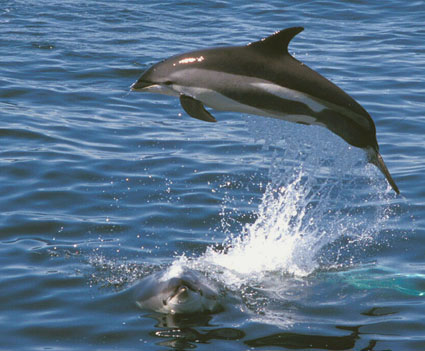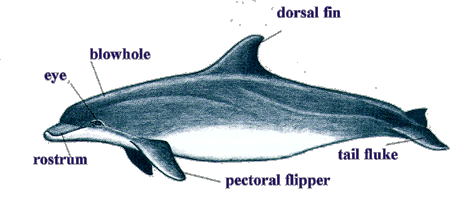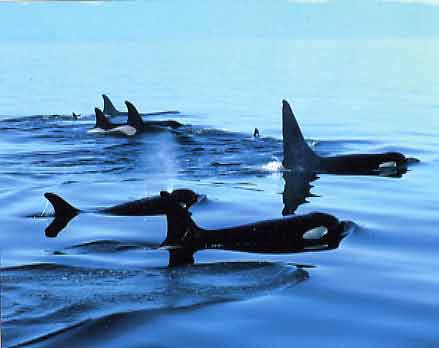Cetaceans:

Cetaceans are marine mammals that are obligatorily aquatic. Typically divided into two groups: Odontoceti (Toothed whales) and Mysticeti (Baleen whales), cetaceans are extremely widespread and diverse. Dolphins like the Orca (largest member of the dolphin family) are found in all seven oceans (Nowak 2003). Similar to pinnipeds, cetaceans rely on blubber. Providing energy and regulating internal temperature, buoyancy, and streamline, blubber is extremely important (Nowak 2003). The internal skeleton of cetaceans is composed of oil filled porous bones. This allows long, deep dives while minimizing pressure damage to bones (Nowak 2003).
(www.turtletrack.org)
Differences Between Toothed and Baleen Whales
|
Toothed Whales: Orcas, Belugas |
Baleen Whales: Minke, Humpback, Blue |
Head Shape |
Asymmetrical: Defined rostrum, melon and conical teeth |
Symmetrical shape with large baleen plates |
Vocalization |
High pitched, short ranged frequencies |
Low, long ranged frequencies |
Socialization |
Social: live in pods |
Solitary: gather for breeding |
Sexual Dimorphism |
Males larger than Females |
Females larger than males |
Feeding |
Predatory |
Filter feeds |
Social Structure |
Patriarchal |
Matriarchal |
Blowholes |
Single blowhole |
Multiple blowholes (usually 2) |
Anatomy

http://monyscurry.com/dolphins.htm
Orcas

(www.wildernesscommittee.org)
-
Orcas earned their reputation as the "Killer Whale" because they are the largest marine mammal predator. Their throat is large enough to swallow smaller cetaceans, pinnipeds and other prey whole. (Nowak 2003)
- Orcas are the largest member of the dolphin family. Males are significantly larger than females. Each can weigh several tons (Nowak 2003)
- Orcas are found in all seven oceans, though they typically prefer coastal waters, estuaries, shallow bays, and river mouths. (Nowak 2003)
- Pods are known to communicate using a series of clicks, whistles, and pulses unique to each individual. (Nowak 2003)
- Orcas are commonly associated with the Pacific Northwest. Whales live stable pod communities, which often travel with other pod groups. This provides protection and hunting advantages. (Nowak 2003)
- Orcas have varied diet including fish, seals, sea lions, sea otters and other whales. (Nowak 2003)
- Resident Orcas: Resident orcas feed primarily on fish populations, such as salmon, and are composed of several sub pods. (Nowak 2003)
- Transient Orcas: orcas of the transient pods often prey on other marine mammals including seals, sea lions and other whales. (Nowak 2003)

